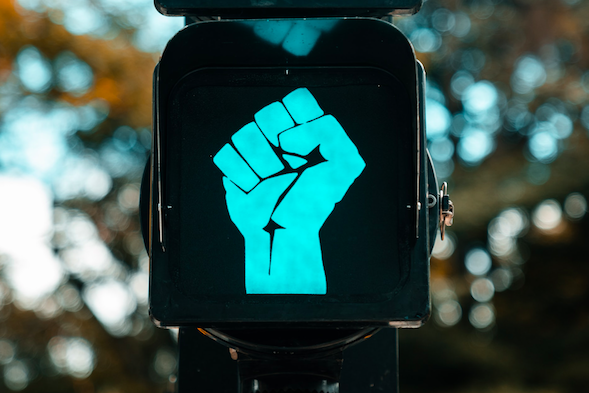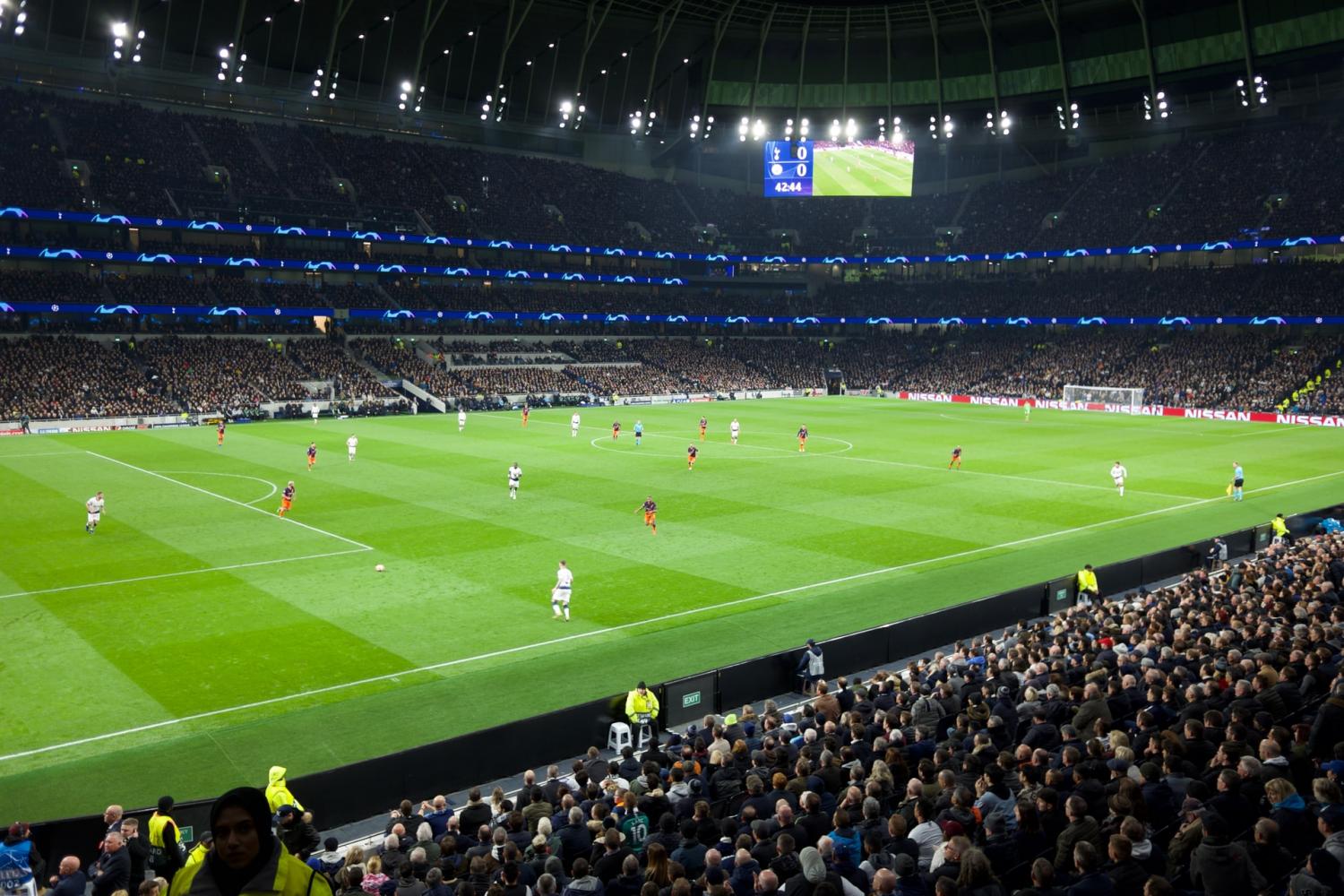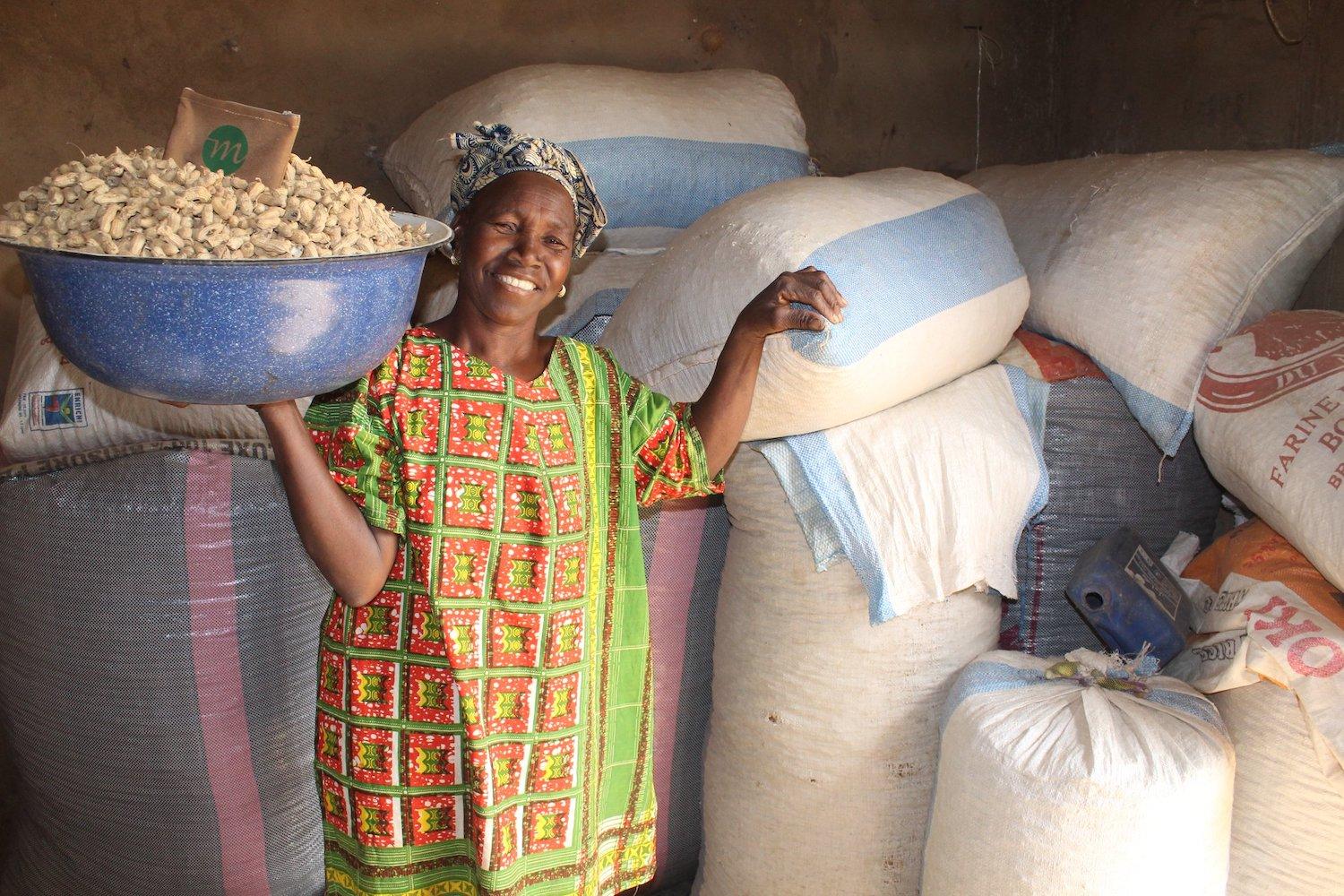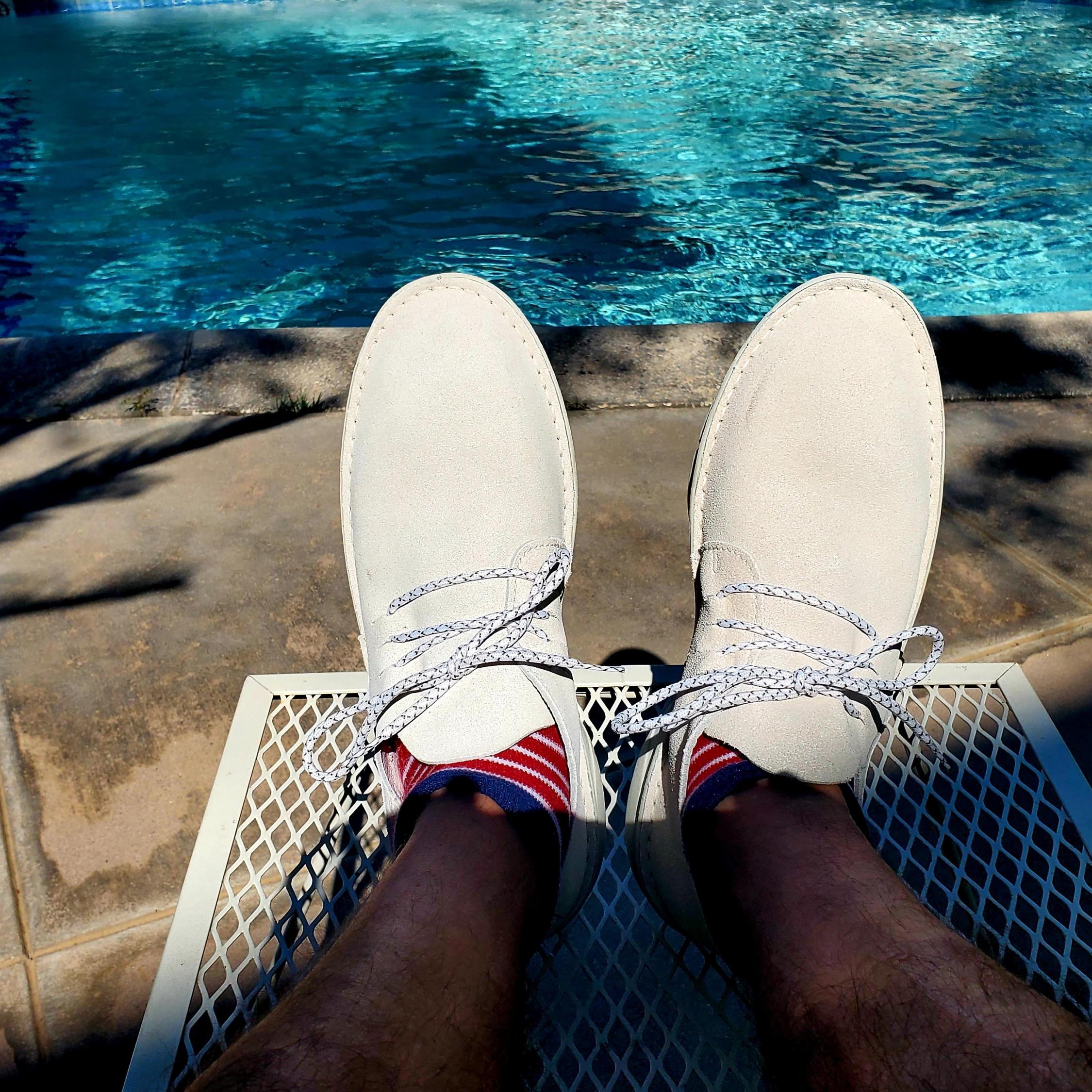UMWA Seeks Foothold for Coal in the Green Hydrogen Economy


Photo: A train transporting coal outside of Danville, West Virginia, a state that lost more than 40,000 coal mining jobs over the past decade. The UMWA recently issued a statement covering how coal miners, their families and communities can be part of the global energy transition.
The United Mine Workers of America (UMWA) caused quite a stir last week when it issued a detailed statement in support of federal energy policies that create new clean energy jobs. The timing was perfect from a political perspective. The statement appeared aimed at encouraging Democratic U.S. Senator Joe Manchin to support President Biden’s climate-friendly infrastructure plan, even though he represents the iconic coal-producing state of West Virginia.
To be clear, UMWA was equally insistent that federal policy must continue to support coal production. The two positions are not mutually exclusive, since coal has other uses aside from power generation. However, the spectacular rise of the green hydrogen industry may close off coal employment pathways that seemed safe just a few years ago.
UMWA: it’s all about the jobs
From the perspective of environmental advocates, the first part of the UMWA’s statement is a ringing endorsement of green jobs and the concept of a just transition. However, UMWA states up front that its mission has three parts. In deliberate order, first comes preserving UMWA jobs. Creating new jobs comes second. Preserving UMWA families and communities comes third, meaning that both the existing jobs, and the new jobs, need to provide for steady employment and a fair wage.
The U.S. coal industry has always been both a scourge and a benefit to local communities, especially in the coal states of Appalachia where the early years of the industry were steeped in anti-worker repression, violence and outright murder. Black lung disease and other health impacts continue to besiege coal workers and their communities up to the present day, along with the environmental impacts of strip mining and mountaintop removal. The long-term results have included high rates of poverty and poor health outcomes in coal-producing counties.
Accordingly, the UMWA statement draws a portrait of vulnerable communities that are spiraling downward as the number of coal jobs shrinks.
“The devastating impact on families and communities cannot be overstated. Divorce, drug addiction, imprisonment and suicide rates are all on the rise. Poverty levels are creeping back up in Northern and Central Appalachia, the heart of coal country. For every one direct coal job that has been lost, four other jobs have disappeared in these communities, meaning a quarter of a million jobs already have been lost,” UMWA writes.
New jobs for coal workers
The UMWA statement does foresee opportunities for good union jobs in clean power, abandoned mine reclamation projects and other non-coal areas. UMWA also makes the case for displaced coal workers to receive tuition and job training benefits, and it argues for replacing lost tax revenues from the coal industry with new funding streams for local schools and other civic infrastructure.
“This cannot be the sort of ‘just transition’ wishful thinking so common in the environmental community. There must be a set of specific, concrete actions that are fully-funded and long-term,” UMWA argues.
UMWA also points out that a funding model already exists.
“The easiest and most efficient way to fund this would be through a ‘wires’ charge on retail electric power sales, paid by utility customers, which would add about two-tenths of one cent per kilowatt hour to the average electric bill. This would amount to less than $3.00 per month for the average residential ratepayer,” UMWA explains, referring to a 2010 climate bill that would have provided subsidies for utilities to apply carbon capture technology to coal power plants. The bill passed the House but was not taken up by the Senate.
How to save coal: the green hydrogen conundrum
The enactment of a wires charge may not be as easy as UMWA anticipates. However, other funding avenues could materialize. To the extent that the Biden administration’s climate and environmental justice goals create new green jobs, coal communities stand to benefit along with other distressed populations.
The picture becomes much more complicated when UMWA lists its proposals for preserving coal mining jobs.
For example, UMWA advocates for policies that incentivize steel production in the U.S. That would stimulate demand for the metallurgical grade coal used in steel making, in addition to improving the outlook for energy demand
However, that is not a long-term solution. The global steel industry is already exploring green hydrogen as a decarbonization pathway, with support from auto makers and other leading steel buyers. The prospects for pitching coal-made steel in the global marketplace are dimming.
Similarly, UMWA proposes incentivizing hydrogen production from underground coal seams. However, the cost of green hydrogen is dropping rapidly. Currently, the main pathway for green hydrogen is electrolysis, in which electricity is deployed to force hydrogen gas from water. Rounding out the green picture is the use of renewable energy to provide the electricity. It is impossible for coal to compete on those terms as the global hydrogen supply chain decarbonizes.
Aside from cost, green hydrogen has additional advantages over coal-sourced hydrogen, especially in the area of electrolysis.
Electrolysis systems are not dependent on specific geological formations, so they can be deployed in a wide variety of locations. They can be scaled down to the size of a parking spot, or even smaller. Depending on the availability of water and energy, electrolysis systems can be sited at or near the point where the hydrogen is to be used. Electrolysis facilities can also be built at existing port sites, providing for easy access to overseas markets for green hydrogen.
More hydrogen trouble ahead for coal workers
To the extent that “green” means renewable, green hydrogen can also be sourced from biogas. Additionally, the element of recycling comes into play, as hydrogen can be extracted from industrial waste gas, recycled plastic, and other synthetic sources.
In an ominous sign for U.S. coal workers, just last week the leading global hydrogen supplier Hyzon launched the Hyzon Zero Carbon Alliance, which aims to accelerate the market for zero emission hydrogen fuel cell vehicles. Though the new organization appears to be focused on green, renewable, or recycled hydrogen, it may also leave room for the 800-pound gorilla in the room: hydrogen sourced from natural gas.
Natural gas is the main source of the global hydrogen supply today. Its pressure on the hydrogen supply chain is all but certain to increase in the coming years. Low-cost renewable energy is pushing natural gas out of the power generation market, and natural gas stakeholders are turning to the hydrogen market to stay afloat.
As UMWA itself acknowledges, natural gas was the initial driver pushing coal out of the U.S. power generation market. Now it is poised to squeeze coal out of the hydrogen market, too.
The carbon capture conundrum
UMWA is also on shaky ground in the area of carbon capture and storage (CCS). The union proposes five-year waivers for operators of coal power plants that commit to installing CCS systems, along with public funding to help commercialize the technology by 2030. However, the commercial viability of CCS has yet to be proven, and the U.S. has already had one bad experience with publicly funded CCS projects for coal power plants, the ill-fated FutureGen project.
The U.S. Department of Energy continues to fund CCS research and demonstration projects, but there is little chance of a direct benefit to U.S. coal workers. Consumer and corporate pressure against coal power plants is already high, and it is growing. If significant public money goes into commercial CCS, the more likely target would be capturing ambient carbon from the air.
Promises, promises
As UMWA proposes, coal mining may continue in the U.S. on a smaller scale, as in the market for rare earth materials. However, even that foothold is subject to change, as researchers engineer new materials to meet new needs.
“The truth is that rank-and-file coal miners have become scarce in the United States,” the union concludes, in recognition that coal communities must adapt.
The U.S. is already peppered with thousands of dead and dying towns that once depended on the extractive industries for local jobs. Coal communities are part of that legacy, but President Biden’s infrastructure bill can provide them with an opportunity to survive and thrive.
The ball is now in the court of Senator Joe Manchin of West Virginia. He appears to hold the key to passage with his vote, and the UMWA statement has just provided him with permission to vote in favor.
Image credit: Magnolia677/Wiki Commons
An Environmental Justice Deal that Matters to Black Lives


Despite many environmentalists’ insistence that their movement aligns environmental justice with sustainability and the fight against climate change, here’s the stubborn reality: Many critics will point out that such activism is still occurring within a very white world.
As an example, witness many a journalists' inboxes in the days and weeks before Earth Day, when public relations reps sent emails full of boasts about how former tech bros were doing good to ensure we could live in a green and sustainable world. “Oh, and how is their environmental justice work benefitting poorer urban and rural areas, as well as communities of color?” came a curious reply. Almost always, the answer was crickets.
Bottom line: Many communities still feel as if their voices are not being heard, from poorer neighborhoods to Indigenous communities. Plus, ongoing violence against Black Americans doesn't give credence to any assumptions that things are actually getting better instead of getting worse.
To that end, the Movement for Black Lives (M4BL) has launched what it calls the Red, Black and Green New Deal initiative: a multi-year campaign that aims to develop a climate action agenda while also doing its part to defend Black lives.
“Centering Black people and experiences in climate conversations, policies and solutions means honoring the wisdoms, insights, and stories of those most impacted by climate change and ensures they are a part of leading, identifying solutions, setting priorities, creating policy agendas, and shifting narratives,” the M4BL wrote in an emailed announcement last week.
Organizers seek what they call a National Black Climate Agenda comprised of six pillars: water, energy, land, labor, economy and democracy. While the agenda’s backers make it clear that standard policies like clean water and renewables are important, so too are policies that Black Americans say would level the playing field. They include the guarantee of fair treatment in the mortgage lending process, fair wages and affordable healthcare, and guaranteed access to ballot boxes so they can participate in truly free and fair elections. After all, if Black Americans aren’t able to have a chance at voting for leaders who will actually strive to make progress on climate change, each of the pillars mentioned in this agenda will be extremely difficult to achieve.
Aligned with M4BL is the Gulf Coast Center for Law and Policy as well as Greenpeace, the latter of which released a report it says links the lack of environmental justice within communities of color to the U.S. fossil fuels sector. “The current political opportunity to enact policies to address climate change is also a chance to reduce public health harms and partially alleviate the history of environmental racism,” the Greenpeace report reads, “but only if those goals and stakeholders are included in policy design from the start.”
M4BL and its partners will host a virtual summit on May 11 to hear out ideas on what it says is a push for “Black liberation at the center of the global climate struggle, and [addressing] the impact of climate change and environmental racism on Black communities.”
Image credit: Maick Maciel/Unsplash
Unilever Bets (Part of) the Farm on Regenerative Agriculture
Photo: A coffee estate in the Caldas region of Colombia. More corporate- and family-owned coffee farms are adopting regenerative agriculture practices, such as planting flowers to attract bees and other pollinators or fruit trees to cultivate other crops other than coffee beans.
Over the past decade much of the chatter about agriculture has been about going organic. But in case you haven’t chatted with a favorite vendor at the local farmers’ market, the process to become certified organic is not always the most seamless, especially if certification requires land to go fallow for a particular amount of time. But the evidence suggests regenerative agriculture — which isn’t necessarily 100 percent “organic” but can include tactics such as agroforestry as well as a focus on topsoil health — is now key to the sector becoming more of a player in the global fight against climate change. On a grander scale, more companies like Unilever realize such a focus can help burnish their sustainability chops, too.
The Dutch-Anglo CPG giant says investing in sustainable agriculture has been a part of its overall strategy over the past decade. Recently, the company announced it would also start implementing what it calls a set of regenerative agriculture principles. Those five principles can be summed up in five words: soil, water, climate, biodiversity and livelihoods (i.e., income).
Once one gets past the pretty graphics and PR-speak (“positive outcomes” is a term that should be banned), Unilever’s principles offer other companies, in just about any sector, a template on how they can engage and improve their supply chains so they are less wasteful. Quite frankly, it could also be refashioned into a textbook for classes on supply chain management and sustainable business.
Take water, for example. Here is where companies can launch programs with their suppliers, and their suppliers’ suppliers, to right-size their supply chains. With minimal investments, the results could actually provide big savings and more raw materials with a smaller footprint. Unilever, which has said it is taking a hard look at its water footprint, starts with the “what”: Protect waterways from runoff and erosion, arrive at the most efficient irrigation technology possible and ensure those irrigation projects do not impose on local watersheds.
In case one still wonders what the point of all this is, as is the case for the other four principles, Unilever then gives the “why,” as in metrics: reducing nitrates in any water runoff, stalling sedimentation in any bodies of water near such farms, and finally, measuring the water footprint of those irrigated crops.
A similar approach is taken with preserving and securing biodiversity. In a nod to the argument that we don’t necessarily need more farmland, but instead to ensure that farmland already out there has less of an environmental impact and is more productive, the framework goes as follows: no more encroaching on natural habitats; boost the number of species of flora and fauna; eschew chemicals for insects that nab any pests; and avoid any harmful farming practices like strip farming that critics say lead to monocultures. Unilever does not say any of this is easy, but then again in this day and age, that’s where business-nonprofit partnerships come in.
Unilever is not the first company to incorporate regenerative agriculture but so far has done the best at explaining it. Other global companies that have shown such interest and increased their investments include Danone North America, which earlier this year announced that the acreage included within its regenerative agriculture program had tripled in size.
In addition, PepsiCo last week said it seeks to expand regenerative agriculture practices across 7 million acres by the end of the decade. And General Mills, which owns a bevy of popular brands such as Cascadian Farm, Epic and Annie’s, has included regenerative agriculture within its sustainability strategy. The popular Italian brand Illycaffè has called for the wider coffee industry to adopt regenerative agriculture practices as well.
Image credit: Leon Kaye
Taco Bell Goes Beyond Meat — Literally and Figuratively
While many fast food and fast casual companies have been quick to hop aboard the plant-based bandwagon, Taco Bell stood its ground with a stance that vegetarian meant exactly that, as in beans or potatoes.
But times are a-changing, and the popular chain is responding in kind. As many news outlets including CNBC reported, last week the brand started to roll out the Cravetarian Taco, the meat-free filling of which is made from a combination of peas and garbanzo beans. So far the plant-based version of its Crunchy Taco Supreme is only available in one Orange County location until later this week, but based on the lot of the reviews, this version appears to be a winner. Imagine a 12-pack option with veggie tacos alongside its meat-based choices (shown above) for those of us that need a last-minute potluck option but would rather not bring a bucket of chicken or box of coffee.
That news follows on the heels of a February announcement that Taco Bell (as well as other Yum! Brands chains, including KFC and Pizza Hut) will work together in a partnership with Beyond Meat to develop plant-based menu items. As consumers increasingly seek alternatives to animal-based protein, food companies are compelled to respond in kind, and that is true of Taco Bell and its sister brands. Last summer, KFC explored the possibility of using cultured meat for its chicken nuggets, and as of last fall Beyond Meat sausages are among new topping options at Pizza Hut.
Whether or not Taco Bell decides it wants to hitch its vegetarian wagon to more “cravetarian” options or do more business with Beyond Meat — or both — it’s clear that Southern California-based Beyond Meat is on a winning streak. Recently, Carl’s Jr. doubled down on its dealings with the analog meat brand by way of a plant-based “menu takeover” at one of its Los Angeles locations. For those who’d rather grill a plant-based meal at home, now CVS carries some of the company’s products (check those mile-long receipts for potential coupons).
Taco Bell isn’t solely dabbling in alternative proteins as it boosts its sustainability street cred. As for those colorful tiny sauce packets that either end up in landfill or in the condiment morgue section of your refrigerator, change is also on the horizon. Last week, the brand said it would work with TerraCycle to find those pesky sauce packets a second life — we nominate making swag like cell phone cases or wallets so you can show off your affinity for the chain’s menu as you pay for future Taco Bell vegetarian orders.
Image credit: Taco Bell media relations
The Implosion of the Super League Offers a Master Class in How to Treat Your Stakeholders


In the long term, it may not rank in epic infamy like New Coke, the 1983 NBC series "Manimal" or the Fyre Festival, mostly because the drama that swirled around the 72-hour life of the Super League crashed almost as quickly as it soared. Nevertheless, the ploy by several of Europe’s wealthiest soccer teams to replace or at least rival the continent’s Champion League was more than a massive public relations blunder — it also affected a major global bank that was poised to profit from the scheme.
A fiasco for the billionaires’ club
In a nutshell, a dozen teams — mostly from England, plus a few leading Italian and Spanish soccer clubs — decided they wanted to go their own route and determine their very own champion across continental Europe. Among their arguments was that the wealthier Premier League clubs — Arsenal, Chelsea, Liverpool, Manchester City, Manchester United and Tottenham Hotspur — were held back from churning out even more profits by competing against clubs generating far less revenue.
Further, the risk of relegation, the process by which a poorly performing team in a European soccer league is demoted to a lower division, surely weighed on some of the club owners’ minds. That’s especially true of the American owners such as the Glazer family, John Henry and Stan Kroenke, who come from a culture where there is no relegation and maximizing sports teams’ revenues — mostly via television — is a must at all and any costs.
Well, as we’ve seen on just about every sports news site and major newswire, the idea that the same 12 or 15 teams, plus a few additional token clubs, could have a guaranteed shot at a “championship” scored about as much love as a Luis Suárez handball. Start with the fact that the Premier League’s current ninth-place Arsenal was guaranteed such an opportunity, but third-place Leicester City (the 2015-2016 champion) would never get an invitation. The concept far from resonated with fans.
One could counter that sports is not just about fair competition and the fans, and that is true to a point. After all, on this side of the pond, if sports were about the fans, then the first iteration of the Browns would never have left Cleveland, the Giants and Dodgers would continue to play in New York, and Seattle, not Oklahoma City, would still have an NBA team.
Yes, your stakeholders matter
But here’s where things went awry, going beyond what ESPN and other news outlets are calling the “Selfish Six,” summed up by furious protesting Chelsea fans blocking the team’s bus as it was on its way to a match earlier this week. You would have thought these team’s owners, who are so rich they have the resources to hire the smartest to work for them, would have accounted for this risk: If they became fodder for the British tabloid press, then their plan would surely suffer a quick death before it could even be hatched.
And the press had plenty to run with, with several managers of English clubs saying they had not been told of any plans for the Super League before last weekend’s announcement. At best, their opinions about the Super League were non-committal, or they were simply tight-lipped about their thoughts.
Based on the reactions of many players (and their agents), it is clear many of them were left in the dark as well. It was also unclear how participation in the Super League would have an impact on players’ participation in the quadrennial World Cup and popular European Championships — and the threat of a ban on such participation added more fuel to this transatlantic dumpster fire.
The memo to companies: Don’t go Super League
Imagine employees at any company learned their organization’s marquee product or service was either about to completely change or even be eliminated, but instead of hearing about it from management, they got wind of the news from the media, blogs or social media platforms — or even worse, the company’s hired accounting or management consulting firms. And on top of that, it is clear the Super League plan was hatched with little or no involvement from the game’s stakeholders and without any thought as to how employees, or the public, would receive such an announcement.
There’s a good chance these club owners can withstand the blowback, though their actions created so much furor that even France’s Emanuel Macron and the U.K.’s Boris Johnson found themselves in agreement.
But the same may not be said of the bank that was instrumental in the launch of the Super League. Unfortunately, that financial giant only scored what several in the press described as an “own goal.”
From mega-deal to downgrade
JPMorgan Chase was poised to profit handsomely from its role in financing the Super League, with the expectation that it would reap dividends from future lucrative television deals.
“The size of the proposed financing meant the bank stood to receive millions of dollars in fees. Instead, the project appears doomed after most of the teams pulled out with fans, players and politicians decrying the plan,” wrote David Hellier and Harry Wilson for Bloomberg. “JPMorgan is now left to assess the fallout from a proposal that appears to have underestimated the potential backlash from upending a sport with deep traditions and local roots.”
That fallout included at least one downgrade for JPMorgan’s sustainability ratings. One ratings agency, Standard Ethics, announced on Wednesday that it “judges both the orientations shown by the football clubs involved in the project and those of the U.S. Bank to be contrary to sustainability best practices, which are defined by the agency according to UN, OECD and European Union guidelines, and take into account the interests of the stakeholders.”
In other words, JPMorgan’s ESG grade fell a notch from “adequate” (EE-) to “non-compliant.” (E+). Maybe not as dramatic as Neymar faking an injury, but still: Ouch!
Even the level-headed, buttoned-down Financial Times could not hold itself back from throwing shade at the Super League, the participating clubs and JPMorgan. “No one at JPMorgan Chase apparently had read the letter to shareholders written by its chair and chief executive Jamie Dimon in the bank’s latest annual report,” FT’s Philips Stephens wrote. “Published only this month, the letter showcased Dimon’s well-publicized efforts to position the bank as a leader in the brave new world of socially responsible and sustainable capitalism.”
Stephens also wasn’t having any of Dimon’s previous talk about “community.”
“Tell that to the players and supporters of such hallowed institutions as Manchester United and Liverpool, and to the communities in which these great teams grew up. The plan to supplant the present Champions League with a ‘closed’ competition between Europe’s richest clubs promised to tear up the game’s traditions, destroy its competitive spirit and mock the towns and cities in which the teams are rooted.”
Marketers will tell you this concept should have been rigorously floated or “test-marketed.” Comms professionals will acknowledge this Super League could have been super-communicated in a more professional manner. But the Super League’s demise points to a common mistake many companies make when they make what they may think are bold, far-reaching visionary decisions.
Whether it’s a poorly-named food product or an accessory with a design that smacks of racism, many businesses still have not learned this simple rule: When you embark on developing that new product, service or even overall strategy, you must include representatives of just about every stakeholder group in those meetings and strategy calls. A fan would have reminded this group of owners about how important the game’s, and teams’, legacy and history are to them — and the fact that the revenues are surely rolling in, starting with the fact many of these soccer pitches are named after a UAE- or Qatar-based airline. A player would have reminded them about the emotional pull of the chance for representing your country every four years, as well as how even more games add to the risk of injury.
Now, these club owners have put their bottom lines at risk instead of generating rewards – starting with Johnson’s threat to drop a “legislative bomb,” such as paving the way for fans to have an ownership stake in these teams.
Image credit: Tim Bechervaise/Unsplash
Those So-Called Intangible Assets Matter More than Ever. Here’s Why.


We have all heard that measuring what matters is how successful businesses are run. As for what are often called “intangible assets,” that has long been a different conversation.
Research points to the inescapable conclusion that we are emphasizing measurement on what used to matter, whereas the focus and robust attention needs to shift to what matters in today’s world – environmental, social and governance (ESG) actions and impacts.
More than a decade ago, a shareholder activist and corporate governance adviser, Robert A. G. Monks, joined with Alexandria Reed Lajoux, founding principal of Capital Expert Services, LLC (CapEx), to quantify what went into defining what goes into corporate valuations. They determined that between 70 and 90 percent of the value of publicly traded companies in the U.S. was attributable not to the physical and financial assets, but was embedded in what many have described as intangible assets, which can include intellectual property, customer loyalty, employee engagement and productivity, labor relations, community goodwill, brand reputation and analysts’ perceptions.
In a recent study, the advisory firm Oceana Tomo updated this research, finding that the percentage of value associated with intangible assets is 90 for the S&P 500 and that the same trend can be seen - although not as starkly for the S&P Europe 350 index - with an increase from 71 percent in 2015 to 74 percent in 2020.

Why is this important? Because these things are best enhanced by the effective management of ESG efforts one can make the case that measuring and managing sustainability efforts impacts is increasingly the largest family of drivers of corporate value. Therefore, it is time that we stopped considering to the largest contributor to corporate value of a business as intangible assets. It’s time for holding companies to measure and report their ESG efforts and results with the same precision and subject those metrics to the same level of scrutiny and professionalism that we associate with more traditional metrics that are included in corporate balance sheets, financial reports and public filings.
The Governance & Accountability Institute, a New York-based sustainability consulting and research firm, has found that slightly less than a third (29 percent) of S&P 500 companies issuing sustainability reports included external assurance of their disclosures. It is likely that, just as the number of companies issuing reports has grown, so will the number that recognize the value and increased credibility to be gained by providing independently validated Sustainability disclosures.
And this is likely to grow, as skepticism around these reports remains high. Earlier this month, the examinations staff at the Securities and Exchange Commission (SEC) recently issued a risk alert to make investors aware of potentially misleading statements found during recent examinations of investment companies that offer ESG products and services.
While some countries, like France, have required social and environmental impact reporting of the company’s activities as well as their societal commitments for sustainable development into their annual reporting requirements, that is not the case everywhere. Where it is required, both ORÉE and KPMG found that the new legislation has helped improve the non-financial corporate communications.
As more and more investors and companies recognize that what has long been called intangible assets have very real and tangible impacts on corporate valuation, the continued trend toward professionalizing sustainability reporting is likely to increase in the future. And it is a safe bet that some proactive companies are already laying the foundation by creating internal mechanisms today for this eventual evolution of ESG reporting, whether it is compelled by the marketplace or laws.
After all, if you’re not validating the most impactful data relating to the true value of your company, how well are you really managing your business?
Image credit: Headway/Unsplash
From Farm to Fork: How Technology Can Help Lift Smallholder Farmers Out of Poverty


The world produces enough food to feed every individual, yet almost 690 million people continue to go hungry. The irony is that many of those who are undernourished spend their days growing food for others. Smallholder farmers, who cultivate less than 5 acres of land, constitute a large portion of the world’s poor living on less than $2 a day, according to World Bank estimates. This is despite the fact that they create livelihoods for more than 2 billion people worldwide and produce about 80 percent of the food consumed in Asia and sub-Saharan Africa.
The United Nations reports that supporting these farmers is one of the quickest ways to lift over 1 billion people out of poverty. The task, however, isn’t easy. “Two decades of underinvestment in agriculture, growing competition for land and water, rising fuel and fertilizer prices, and climate change have left smallholders less able to escape poverty,” Achim Steiner, administrator of the U.N. Development Program, said in a statement on the subject. The U.N. World Food Program also counts limited access to financing and inputs like seeds and fertilizers among the biggest challenges smallholders face.
Tech innovations can help close the inequality gap for smallholder farmers
One innovative solution that has reached 90,000 farmers in Mali, Senegal and Tanzania is called myAgro. Founded a decade ago, myAgro provides a host of services for smallholder farmers — including a mobile layaway program that enables farmers to pay for seeds, fertilizer, and other inputs little by little throughout the year.
myAgro’s simple solution addresses a key barrier that keeps smallholder farmers in poverty: lack of access to financial services. Farmers’ primary expenses — seeds and fertilizers — must be purchased in bulk at prices upwards of $100. Since their income varies seasonally, they often don’t have the cash to invest in seeds and fertilizers when planting time comes. Many live far away from banks, which makes saving even more difficult. The result is poor productivity and low yields, keeping smallholder farmers in a cycle of poverty.
Through myAgro’s platform, farmers can purchase scratch cards for as little as $1 from local convenience stores when they have a bit of cash on hand. The shopkeeper enters a code into his or her mobile phone to register the investments in the farmer's account, which is used to pay for seeds and fertilizers when the planting season comes.
The model is familiar to farmers and functions much like prepaid phone scratch cards, which are already sold in convenience stores in rural villages around the world. There are no loans involved, no interest rates, and no need to pay anything back.
“We’re using the farmers’ money when it's available to them in the season,” explained Sid Wiesner, chief technology officer for myAgro. “They're basically using their own money to fund something that happens later at a tough time of the year.”
For farmers like Awa Camara from Bancoumana, Mali, it makes all the difference. “Agriculture is our main activity, so it’s important for us — especially women — to have good harvests so we can meet our families’ needs,” she said. “I really appreciate the little-by-little payments, because us women especially have many expenses, like buying food to feed our families … Now, we always have quality inputs in time for planting and bigger harvests.”
myAgro also provides training for all farmers who use its mobile investment platform to share harvest-improving agricultural techniques tailored to specific regions and crops. Farmers including Mareme Sakho from Senegal report more than quadrupling their yields since they began using myAgro.
Strengthening a proven system with tech partnerships
Key to an organization continuing to thrive and scale is understanding that it can’t do everything alone, Wiesner said. myAgro partners with governments, NGOs such as Catholic Relief Services, and technology companies like Cisco to power its work.
With Cisco, myAgro was able to take some tech projects from the back burner to the field. Over their three-year relationship, Cisco has offered myAgro expertise in various technologies, in addition to a grant that helped myAgro improve the functionality and flexibility of its layaway platform and create new digital tools for farmers.
Before the partnership, myAgro had laid the groundwork for a digital payments system, as well as a data platform and field tools that hadn’t yet been scaled up, Wiesner said. “The Cisco funding allowed us to hire direct developers, allowed us to grow that team, allowed us to iterate more quickly… and then also to push it out to the team as a whole,” he added.
The data platform proved particularly useful, as it allows myAgro and its partners to access real-time data about farmers, their needs, and how myAgro helps to address them. “There’s a shared accountability,” Wiesner said of the platform. “It’s not just us reporting something — [our team and our partners] have access to live data. As things are happening, they can check in and see how things are progressing versus targets. That’s been really powerful — to open that up, to share that, to make that transparent across the board.”
Tech investments can help smallholder farmers cope with the pandemic
As the COVID-19 pandemic disrupts lives and livelihoods around the world, threatening to push up to half a billion people back into poverty, the importance of supporting smallholder farmers is more apparent than ever. “Food security is much worse for so many farmers” amidst the pandemic, Wiesner said.
Like countless organizations around the world, myAgro was forced to pivot quickly as it attempted to keep tabs on government regulations and what was happening on the ground. It transitioned agricultural training sessions to video, radio and broadcast, took more payments by phone, and fielded frequent questions from farmers.
Though the shift was challenging, myAgro actually grew its reach by 44 percent and delivered seeds and fertilizers as expected last season, Wiesner told us. “It was definitely a huge disruption, but still a very successful season,” he said. “[COVID-19] has emphasized some of the things we already made investments in: Some of the digital tools and data actually helped us … make that transition easier than it would have been three or five years ago.”
Technology will continue to be crucial in lifting farmers out of poverty
Overall, technology is poised to play an increasingly vital role in better serving smallholder farmers: In a 2020 report, the professional services firm EY cited digital innovation as a means to lift millions of smallholder farmers out of poverty, and the World Bank predicts that digital technology will be key to improving the world’s food system.
For its part, myAgro aims to leverage its model to increase the incomes of 1 million smallholder farmers by $1.50 a day by 2025. “A lot of our growth is really now focusing on what has already worked and finding great opportunities to scale it up,” Wiesner said.
This article series is sponsored by Cisco and produced by the TriplePundit editorial team.
Image courtesy of myAgro
Brands Are Figuring Out That Sustainable Shoes Can Be Both Cool and Comfortable


Most shoes have about seven parts, but add other elements for design appeal and function, and those parts can add up to a few dozen. Hence one problem fashion brands struggle with as they try to roll out more sustainable shoes: Between an entangled supply chain and dodgy materials that have long been a part of shoe design, responsible manufacturing is a challenge. Of course, there are the materials themselves, many of which are plastic.
Some brands are cracking that nut, however, and are rolling out responsible and sustainable shoes that both look great and have less of an impact on the environment.
Adidas: Kermit the Frog hooks up with Stan Smith
The minimalist Stan Smith has been around for half a century and was a fixture in many a teen’s wardrobe during the 1980s. These classic tennis shoes are still able to stay relevant. For one of the shoe’s latest editions, Adidas introduced a Kermit the Frog line — perfect for the tween or the adulting type who seeks a podiatric nod to the sustainability movement. The best thing about these Stan Smiths? The uppers are made from a material that includes 50 percent recycled content. Like Kermit said while dodging Miss Piggy, it’s not easy being green, but these are a start.

Aloha, Converse
To paraphrase Dame Edna, “If it looks good in Hawaiʻi, it stays in Hawaiʻi.” Some may disagree how kawaii the islands’ trademark shirts (the truth is many are stellar and are more chic rather than screaming a mainlander going full muumuu), it’s a safe assumption to think thousands, if not millions, are hanging and hidden in many a closet.
Converse says it has a solution. According to an emailed announcement the company sent around last month, its designers nabbed about 7,000 shirts and are churning them into a limited-edition version of the iconic Chuck 70s. If the company’s plans go without interruption, the shoes will be available starting today.
In addition, Converse says it will also release sneakers made in part from those pesky Tyvek mailers, as well as hi-tops dyed with more sustainable materials; another product line with an upper that is made from 85 percent recycled materials is also in the works.

Sustainble shoes leader Allbirds sees the forest from the trees
Depending on one’s point of view, the eucalyptus tree, which originally hails from Australia, provides spectacular scenery and its scent evokes an indulgent spa day. To others (especially in California), it’s more of a giant weed that is a fire hazard, or during heavy rains inspires too many love letters to home insurers for whom their properties may unfortunately may have been plunked in these trees' gargantuan path.
Allbirds has found a use for the mercurial eucalyptus: It’s the base of what the company says makes for a smart pair of sustainable shoes. Rather than using cotton, the shoes’ uppers are made from eucalyptus fiber, which makes for an airy, breathable, easy-to-care-for pair of shoes that are yes, a more responsible option.

Clarks goes back to its origins
It’s highly improbable Clarks inspired the Proclaimers’ song “I Would Walk 500 Miles” — after all, the tune was featured in the 1993 movie Benny and Joon — but serious walkers have long been very serious, if not ebullient, about Clarks. TriplePundit tried out a pair of the new Origin sneakers, and in addition to the fact they pair well with seersucker shorts, they are amazingly lightweight. The outsole is made from 51 percent recycled content, and here’s what really makes the Origin a winning pair of sustainable shoes: They are made out of only five parts including the laces, and no glue is used in their construction.
Will they last as long as 3p’s other pair of Clarks, which were scored during a 2008 biz trip to D.C.? Check in with us in 2034 — the older pair is proving to be fairly indestructible. If durability defines sustainable shoes, then the more ancient pair has already passed the test.

Vans: Black Lives Matter
The social side of sustainability is just as important as the environmental side — perhaps even more, as it is clear many marginalized communities have been overlooked by the sustainability movement. We’ve profiled this line of shoes from Vans and have no hesitation about showcasing them again. As part of these shoes' backstories, one of the series' featured artists, Chris Martins, discussed the impact of racism on the Black experience in America.
“My Blackness is completely inseparable from all aspects of my life. The ideology and bigotry of American history shaped the consciousness of all souls inhabiting Black bodies. Through my work I’m able to hold a mirror to this dark experience and share perspective, inform, and gain the attention of anyone willing to take part in the uneasy American truth,” Martins wrote earlier this year.
Cover image credits: Leon Kaye
Decarbonization, Reforestation and the Indigenous Voice in the Age of Pandemics


The drive for global decarbonization is bringing new industries into new areas, where they can conflict with reforestation goals and other habitat conservation efforts. These points of conflict are also calling more attention to the role of human encroachment in sparking viral outbreaks that can lead to pandemics. Energy companies and other stakeholders that claim to be part of the climate solution need to educate themselves on land conservation in order to help prevent the next pandemic, and they should be learning from the lessons of Indigenous people.
Decarbonization and deforestation
There is no question that the global economy must decarbonize, and quickly. However, fossil energy has already done a vast amount of damage. That makes it difficult to build significant new infrastructure without causing fresh harm.
Some solutions are already at hand. For example, forests don’t need to be razed for new solar arrays. Smaller arrays of solar panels are already commonplace on rooftops, parking lots, and other pre-built infrastructure. Utility-scale fields of solar panels can be located on brownfield sites, abandoned mines and other industrial sites. Co-locating solar panels on working farmland is also emerging as a solution. In addition, the falling cost of energy storage adds new opportunities to expand the use of all these solutions.
The issue is somewhat more complicated for biofuel. Although the use of corn and other food crops for has fallen out of favor, second-generation biofuel crops can pose a deforestation threat.
Fortunately, a third generation of biofuel crops is on the horizon. Growing algae on pre-developed sites is one emerging option. Researchers are also looking into shifting biofuel farming out to sea, in the form of seaweed. However, these solutions will take years to scale up, if ever, and time is running short.
A problematic picture also emerges for renewable or green hydrogen. The main pathway for producing green hydrogen is electrolysis, in which electricity is deployed to split hydrogen gas from water. Depending on the availability of renewable energy and water, electrolysis facilities can be located practically anywhere in the world. That leaves the door open to another deforestation threat.
Fortunately, there are numerous opportunities to build green hydrogen hubs on pre-developed sites. To cite one example, the world’s largest electrolysis facility to date is under construction at an existing commercial site at the Port of Pecém, in northeastern Brazil.
Deforestation and pandemics
With so many solutions at hand, there is all the more reason for renewable energy stakeholders to make habitat and forest conservation their top priority, especially in the context of the COVID-19 pandemic.
As reported by an expert panel convened by the international Science-Policy Platform on Biodiversity and Ecosystem Services (IPBES), pandemics are becoming ever more frequent due to climate change and habitat loss. Rather than responding to outbreaks after they occur, the global community must focus more attention on pandemic prevention through habitat conservation.
“The underlying causes of pandemics are the same global environmental changes that drive biodiversity loss and climate change,” IBPES explains. “These include land-use change, agricultural expansion and intensification, and wildlife trade and consumption."
“Escape from the Pandemic Era requires policy options that foster transformative change towards preventing pandemics,” IBPES concludes.
The rise of the Indigenous voice
The IPBES panel advocates for the “One Health” model of land use planning, which links human, animal and environmental well-being. One Health is a global, collaborative and multidisciplinary effort. In the U.S. it is spearheaded by the Centers for Disease Control.
That is a good start, but the voice of Indigenous people appears to be missing. The CDC describes One Health as a network of health and science professionals collaborating with “law enforcement, policymakers, agriculture, communities, and even pet owners.”
The failure to highlight the Indigenous voice stands in contrast to action elsewhere in the Americas. In particular, Costa Rica has become a model for Indigenous empowerment in government. The COVID-19 pandemic is challenging the resiliency of Costa Rica’s Indigenous population like never before, sparking calls for more government help. However, Levi Sucre Romero, coordinator of the Alianza Mesoamericana de Pueblos y Bosques, points out that the relationship is reciprocal.
“In Costa Rica, we Bribri [an Indigenous people living within the country] not only produce world-class cocoa, we have knowledge and a way of life that keeps our forests standing and our environment in ecological harmony,” he wrote last May, when the pandemic was new.
Romero was also the subject of a BBC profile last May, in which he explained how his warnings on deforestation could apply to new energy infrastructure, biofuel farming and any other form of encroachment.
“We’re unbalancing the habitat of species, we’re cutting down trees, we’re planting monocultures, we’re filling the world with cities and asphalt and we’re using too many chemicals,” he said. “It’s a cocktail of bad practices.”
“My people have cultural knowledge that says when Sibö, our God, created Earth, he locked up some bad spirits,” he added. “These spirits come out when we’re not respecting nature and living together.”
Learning, listening, and prioritizing conservation
There are some signs that the U.S. is beginning to pay attention, as climate change is already disrupting Indigenous communities in Alaska and elsewhere in the polar North.
One indication of positive change is the participation of Columbia University’s Earth Institute in a U.S. Climate Action Week event organized by the Global Alliance of Territorial Communities, a coalition that covers 35 million forest peoples in 18 countries, focused on the Amazon Basin, Brazil, Indonesia and Mesoamerica.
Concurrently, this week Columbia announced its leadership roster for the new Columbia Climate School, the first school of its kind in the U.S. and the first new school for the university in 25 years. Alex Halliday, Director of the Earth Institute, will take on the role of Founding Dean while continuing at the Earth Institute.
It remains to be seen to what extent the Climate School itself places Indigenous voices at the top of the conversation. Meanwhile, another positive step occurred earlier this year, when former U.S. Representative Deb Haaland became the first Native American in U.S. history to join the presidential cabinet, as Secretary of the Interior.
A member of the Pueblo of Laguna and a 35th generation New Mexican, Secretary Haaland formerly served on the Laguna Development Corporation Board of Directors, where she advocated for environmentally responsible business practices. She also advocated for environmental justice and climate action while in Congress.
With new leadership at the Interior Department and new networking resources like the Columbia Climate School, energy stakeholders have many new opportunities to engage with Indigenous communities on forest and habitat conservation — and they have no excuse for failing to do so.
Image credit: Frank Ravizza/Pixabay
Why Earth Day Should Be Rebranded as Environmental Justice Day


Any journalist who covers anything related to the environment will tell you how they feel about Earth Day in three words. It’s similar to how many single people feel about the messaging surrounding Valentine’s Day:
“Make it stop!”
While the sentiment and history behind Earth Day is legit, it has been unfortunately hijacked by organizations touting their “green” work, which largely serves as a ploy to sweep their behavior the other 364 days of the year under the rug.
One problem with how we commemorate Earth Day is that we largely overlook the poorer communities that could benefit the most from a greater focus on the environment.
Take St. James Parish, a Louisiana community on the Mississippi River between New Orleans and Baton Rouge, as an example. St. James Parish is small in size and population — 86 square miles and just over 20,000 people call it home. But many of residents feel overwhelmed by the specter of a $9.4 billion petrochemical plant that a Taiwan-based conglomerate is seeking to build. The company says the project will create 8,000 temporary construction jobs and 1,200 permanent jobs paying upper-middle income wages.
Editor's note: Be sure to subscribe to our Brands Taking Stands newsletter, which comes out every Wednesday.
Opponents of the plant, often called the “Sunshine Project,” say it will just pile more environmental problems on this section of the Mississippi River that has long been called “Cancer Alley.” The region has attracted many new petrochemical plants over the past few decades, and critics of the industry say an increase in illnesses including cancer has been among the results. Even one trade publication acknowledged data suggesting 85 percent of the air pollution in St. James Parish is concentrated in areas where residents are overwhelmingly Black.
Further, local critics of what would be a massive plant the size of 1,200 football fields have pointed to a $50 million settlement that the company, Formosa Plastics, paid in 2019 after staff at another plant in Texas was accused of illegally discharging plastic pellets into local waterways. While state political leaders continue to push for the plant’s approval, construction and opening, the U.S. Army Corps of Engineers revoked the Sunshine Project's permit in November. For now, the plant’s future is in limbo.
Environmental concerns are not the only reasons driving the pushback against Formosa Plastics. Last summer, a group of Black residents in St. James Parish accused the company of preventing them from visiting a burial ground of slaves located within the site.
Further, at least one nonprofit said the plant does not make any economic or financial sense. The promise of exporting plastic feedstocks from the plant to China aren’t promising, they argue, as the country is building up its own plastics manufacturing capacity. There’s also a case to be made that the market for petrochemicals in the U.S. is close to being tapped out. And the costs of the plant’s construction continue to rise.
Then, of course, there is the timing of such a project: Mobilizing activists during the era of COVID-19 has been tough, and some of the company’s actions over the past year have been bad for optics.
Such opposition does not lie solely in St. James Parish: New Orleans’ city council has voiced its opposition to the project. “What happens upstream is going to reach us down here,” council member Kristin Gisleson Palmer told the New Orleans Times-Picayune. “The plant might be in St. James, but the environmental effects have the potential to spread over a much larger area.”
Bottom line: The controversy swirling around the Sunshine Project is far beyond a jobs-versus-environment debate, as plenty of locals say any promises of employment are not worth the risks.
“The plants aren’t building our communities,” Clyde Cooper, a St. James Parish council member, said in an interview with the Washington Post. “They’re destroying them, and we have to stop it.” That’s a sentiment shared by many activists who have been saying for decades that environmental degradation has been most punishing to communities of color and poorer urban and rural areas across the U.S.
Image credit: St. James Parish/Facebook